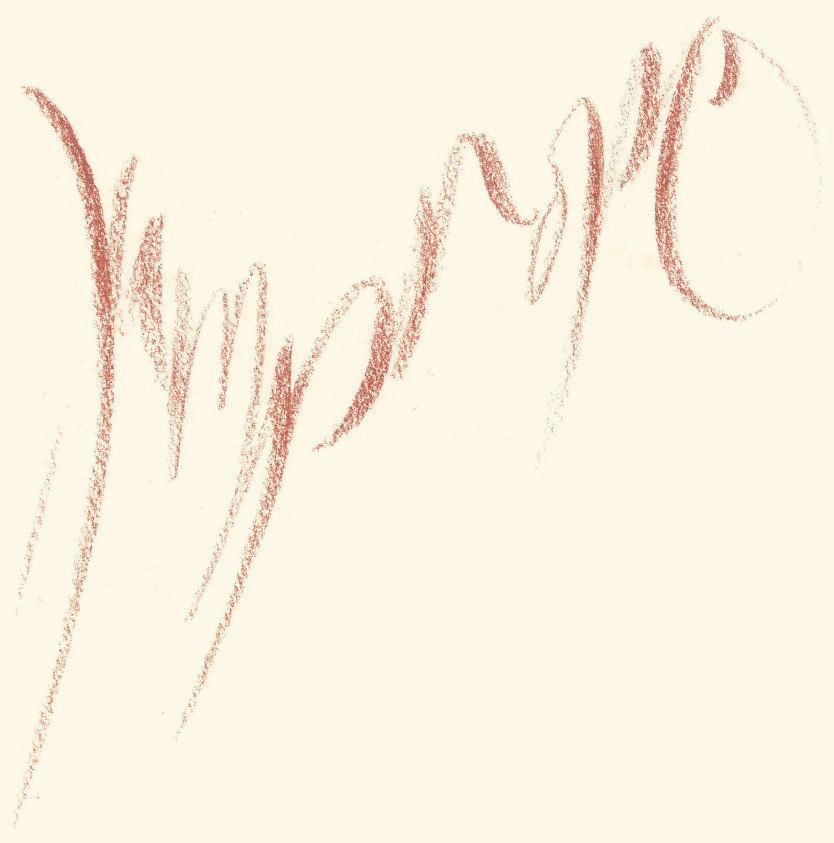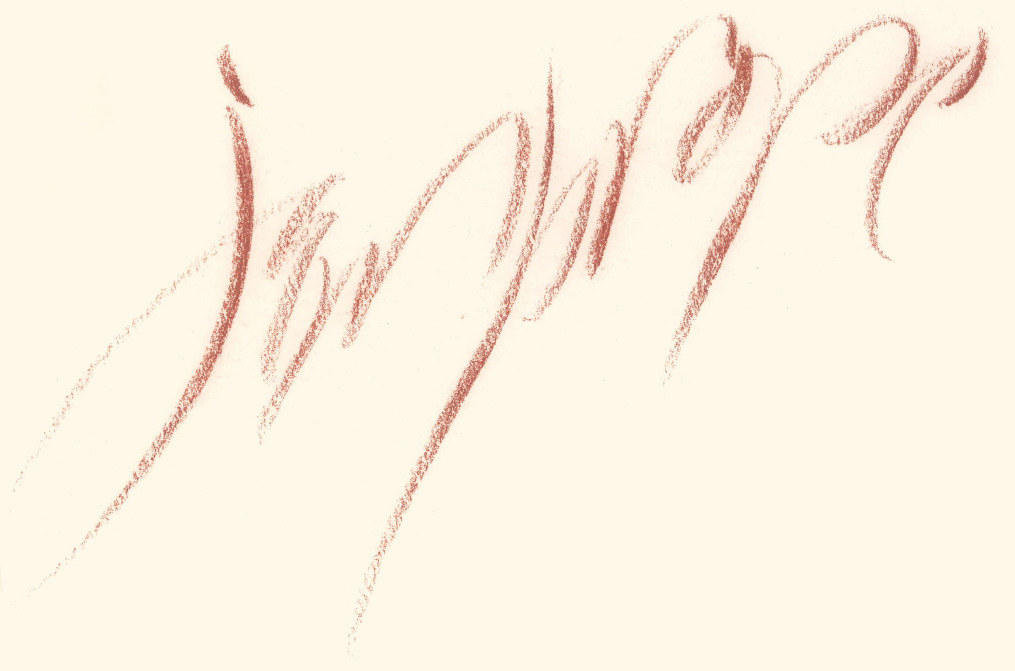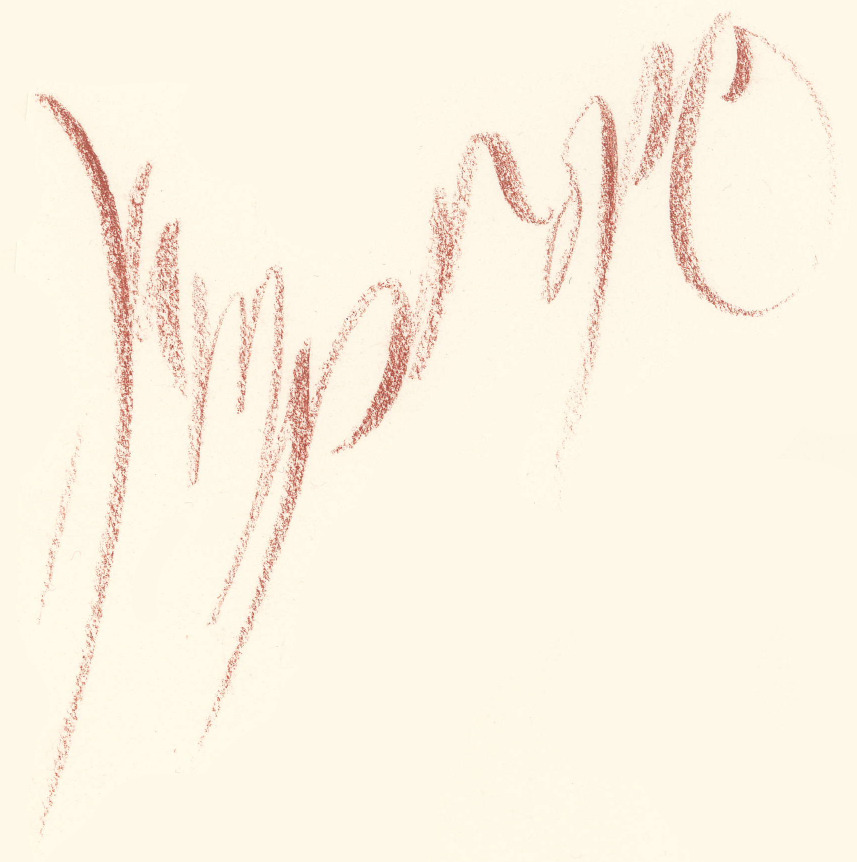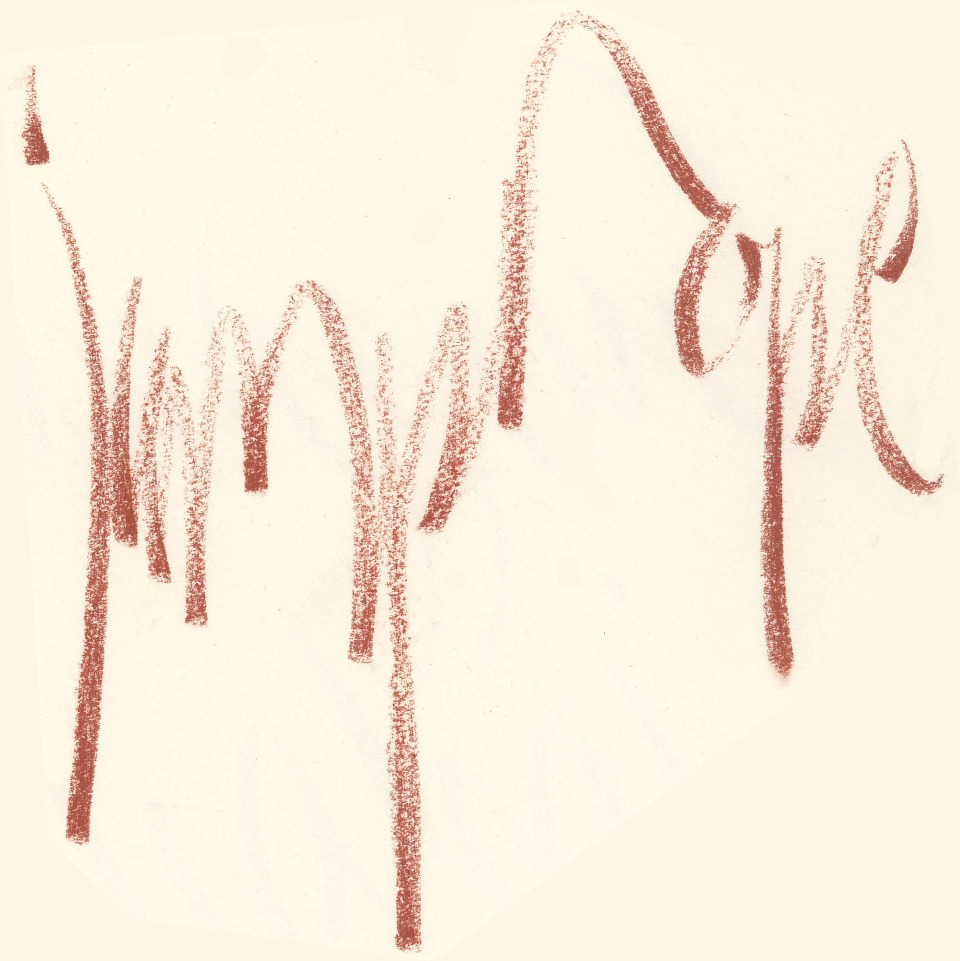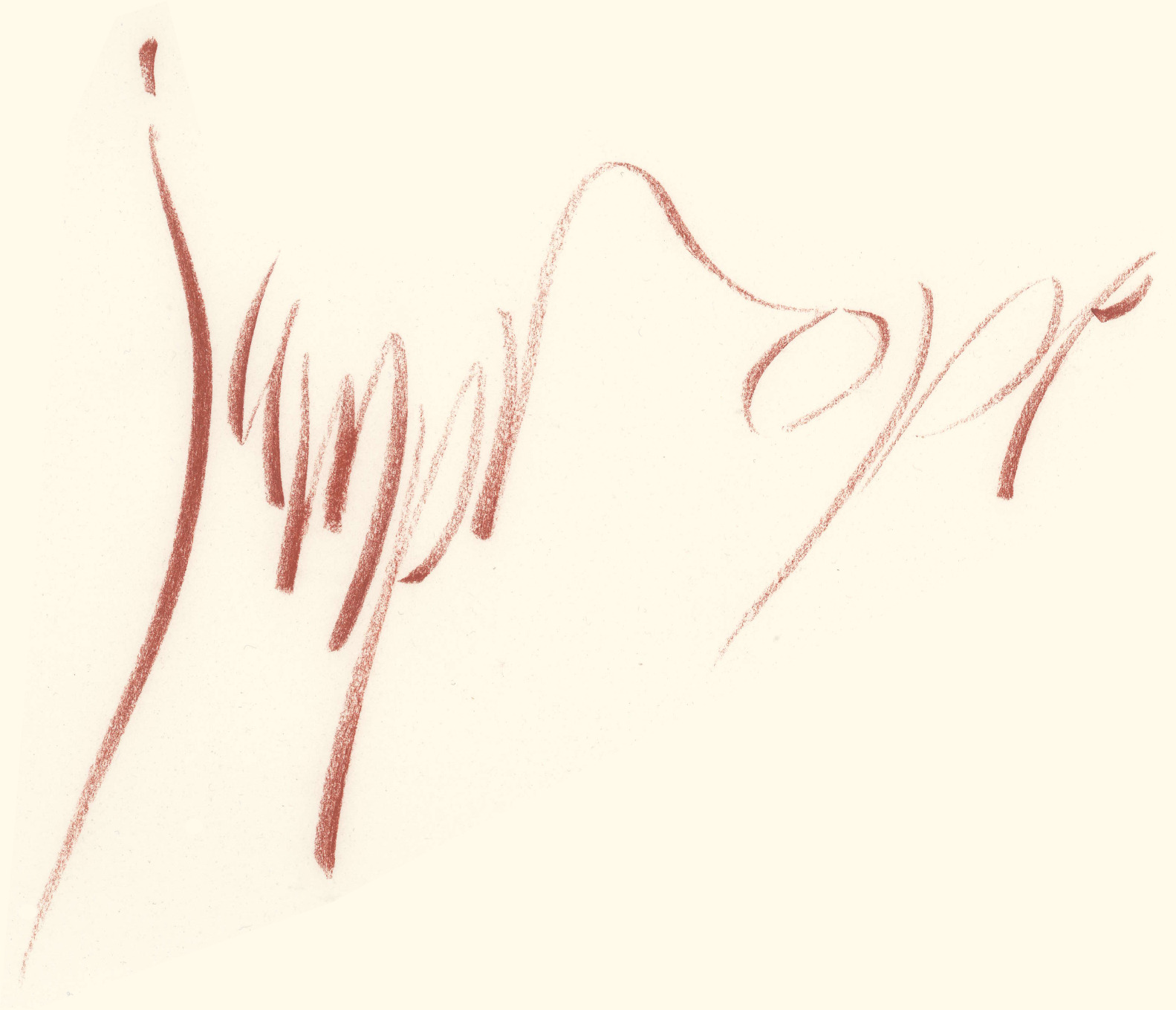Welcome!
In the left column you’ll find my ideas about calligraphy;
in the right, you'll see them in practice.
For me, experimenting with the
plastic, expressive potential of an alphabet is part of learning it.
As always, I’m happy to receive your comments or questions
about the thoughts or the images!
For Gina’s earlier posts, click #1 and #2.
To be notified of Gina's next blog post, please click “Contact” on the menu above.
![]()
CALLIGRAPHY —
a visual art in its infancy
1. Why is calligraphy a visual art? Calligraphy bases its claim to visual art status on its compositional elements: line, shape, and space. Also, on the profound if less obvious sense of its mission: to infuse these elements with life values through the principles of artistic image making.
Uniquely,
calligraphic images
arise from their origins
in the written word. Embedded in a culture of literacy, calligraphic artists celebrate and investigate the meaning of this inheritance. Like other visual artists, calligraphers aspire to create a meaningful experience for viewers.
2. Why do I say calligraphy is in its infancy?
For two main reasons. First, some calligraphers do approach calligraphy as art. However, because there is no recognized method for teaching it as one of the visual arts, it’s seldom found in an art school curriculum. Second, the nature of calligraphy—
both a visual art
and
an art of movement—has not been fully appreciated, no method of training adequate to its unique dual nature has been formulated.
Currently, instruction centers on scribal tradition: students are introduced to scripts written before the invention of printing. They are not instructed in the underlying principles of alphabet design. Neither are they given any technique that cultivates the senses of movement (kinesthetics) and touch. There can be no trace of movement—the fruit of calligraphic art—without touch. The quality of tool contact bears directly upon the quality of letterform and the experience of making it. Without a foundation in design or a technique for cultivating movement and tactile sensitivity, calligraphy is, indeed, in its infancy.
3. Why is the visual art of calligraphy only in its infancy? In the West, as an emerging art calligraphy has haddifficulty breaking the bonds
of parental authority—
the manuscript tradition—despite the invention of printing. In the mid-15th century, writing, like drawing and painting, was considered a skill. However, unlike these skills which gradually outgrew their artisanal status, scribes reinvented themselves: to serve a growing need, they became teachers of handwriting…
Fast forward five centuries. Sparked by the Arts and Crafts Movement, lettering art was added to the art school curriculum. Despite this, in early 20th century Britain the focus remained on scribal skills gained through the study of historic scripts. In Europe, more attention was given to written forms as expressive vehicles. In America, this approach has only slowly gained momentum.
4. How can calligraphy grow into its life potential? In 2018, in my book Calligraphy as Art and Meditation: A New Approach, I took a step toward nurturing calligraphy’s growth and vitality beyond the infant stage. This book charts a fully realized educational program for cultivating alphabetic writing as art. Through my foundation technique, students learn to infuse letterform with the vital qualities of movement, energy, rhythm, and feeling. Developing empathy with line, shape and space, students learn to create letterform that communicates aesthetically and expressively—whether or not it is legible.
I have reconceived the ground for calligraphy instruction: believing it essential to separate training in the basic design principles, dynamics, tool hold and usage from the study of historical scripts. Though these scripts are integral to a comprehensive calligraphic education, alone, they do not provide a sufficiently complex understanding and appreciation of calligraphy as an artistic endeavor. We can value historic styles as symbols of their time just as today’s forms will represent our own. Rich in “form vocabulary,” historical scripts from our own tradition, as well as from others, may stimulate the imagination, allude to cultural values, and impart technique—given a student’s adequate foundation in tool usage.
I believe calligraphy offers
deeply meaningful lessons for a fully-lived, creative life, that calligraphy is an art for our time.
In the list below, you will find many facets of my approach that, I believe, may awaken you to the yet unexplored depth and breadth of calligraphy. I hope that perusing it will help reveal the potential of calligraphy to become a vital artform. I hope, too, it will stimulate a conversation about re-valuing calligraphy as an art uniquely suited to human growth. For me, the practice of calligraphy has become a way to enhance my vitality—to experience the riches of mind, body, and feeling in active collaboration.
- We explore the creative tension between the meaning of a text and its calligraphic expression. To do this…
- We train the eye as an active organ: to understand what it sees and to visualize—both externally, on the paper, and internally, in the mind’s eye, where mental images guide the hand.
- We train in the basic principles of design and in their particular application to alphabets.
- We train developmentally: starting with basic forms and tools and gradually progressing to sophisticated forms and tools.
- We delve into the inherently plastic nature of calligraphy and mold letterform with this understanding.
- We appreciate the dual facets of calligraphy as visual art: decorative pattern and artistic expression.
- We train in awareness of, and sensitivity to, the body that holds and moves the tool, and the sensory feedback that arises from this action.
- We train in the seminal interaction of mind, body, tool, surface, stroke and letterform.
- We train in tool usage to develop the vital calligraphic qualities of movement, energy, rhythm, and feeling.
- We cultivate the needed mental awareness and alertness essential to constructing and spacing letters.
- We can discover that our effort to create “living” letterform activates our own vitality!
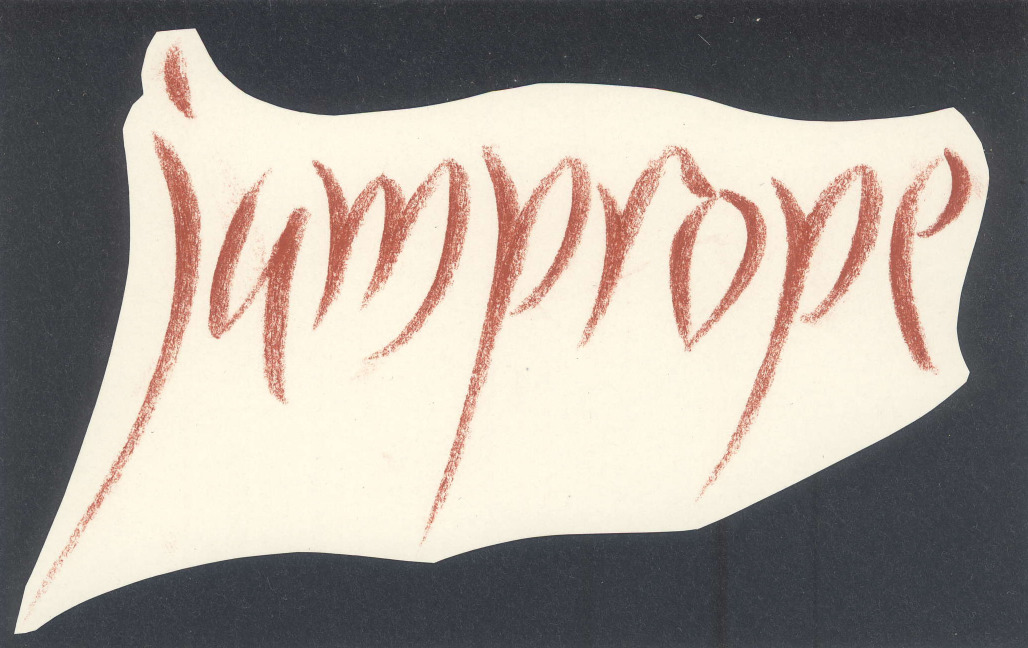
This hand develops the tactile, kinesthetic sensitivity underlying
beautiful and/or expressive letterform. (Conte crayon).
with pressure, letterform, letter slope, & orientation.
